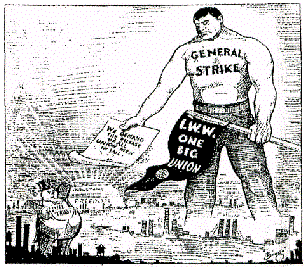
History of May Day

History of May Day
"It was the
very dawning of day when the term
'Dignity of Labor' meant something"
—George E. McNeill
May Day 1886 - The 8 Hour Workday Movement
"One hundred thousand men striking for the eight hours" screamed the headline May 1, 1886. For twenty years working people had watched with growing anger as machines had displaced them in almost every industry and craft.
Their bosses had not shared the increased productivity of those machines with them, nor passed along the profit to them as consumers in lower prices. Across the land they organized in independent unions, locals of national craft unions, and Knights of Labor assemblies.
A depression in 1884 left two million (24 percent) out of work. The unions fought back desperately against wage cuts and agitated for shorter hours to put those two million back to work.
The 1884 convention of the Federation of Organized Trades and Labor Unions (forerunner of the American Federation of Labor) resolved that eight hours "shall constitute a day's work from and after May 1, 1886." People in most trades worked ten hours, and those in factories longer.
 The
May 1 target for eight hours caught on as unions across the country
prepared to implement it in their trades. Members of the Knights
ignored the no-strike edict of top officials and joined the movement
enthusiastically.
The
May 1 target for eight hours caught on as unions across the country
prepared to implement it in their trades. Members of the Knights
ignored the no-strike edict of top officials and joined the movement
enthusiastically.
The employers reacted ferociously to the labor unrest. Jay Gould, the railroad magnate, declared that "labor is a commodity that will in the long run be governed absolutely by the law of supply and demand." Samuel Gompers quoted one manufacturer:
"I regard my employees as do a machine to be used to my advantage, and when they are old and of no further use I cast them in the street," and another manufacturer asserted that when workers "get starved down to it they will go to work at just what you can afford to pay."
From St. Louis east, strikes began the last week in April, punctuated at intervals by huge parades and mass meetings. The first days of May, 80,000 struck in Chicago, 45,000 in New York, 32,000 in Cincinnati, and additional thousands in other cities. Some workers gained shorter hours (eight or nine) with no reduction in pay; others accepted pay cuts with the reduction in hours.
In Tacoma, Typographical Union Local 170 notified all printing offices that on May 1 the workday would be eight hours. It was. In all, the May 1 actions involved 340,000 working people. Of these, 150,000 won shorter hours without striking; 190,000 struck, and 42,000 of the strikers improved their conditions.
In Chicago on May 4 and
unrelated event, the Haymarket bomb, ended the eight-hour campaign
for years. A large company of police officers charged into an Anarchist meeting in Haymarket
Square and ordered the crowd to disperse. An unknown person threw a
bomb into the police ranks, killing seven.
of police officers charged into an Anarchist meeting in Haymarket
Square and ordered the crowd to disperse. An unknown person threw a
bomb into the police ranks, killing seven.
Without attempting to establish the guilt of the Anarchists or any other worker, the press nationally howled for blood, evoking the lynch spirit, "Hang them first and try them afterwards."
Notwithstanding the tragedy, George E. McNeill a contemporary labor historian, declared: "The year 1886 will be known as the year of the great uprising of labor. . . .Hope seemed to have entered the heart of the most oppressed.
It was the very dawning of the day when the term 'dignity of labor' meant something. Laboring men who had heretofore considered themselves as scarcely more than serfs, without rights or privileges, fearing to organize, or failing to do so because of the hopelessness of their condition, seemed to be inspired with a new spirit. So great was the increased membership that even the largest of organized labor."
Olllie Markholt